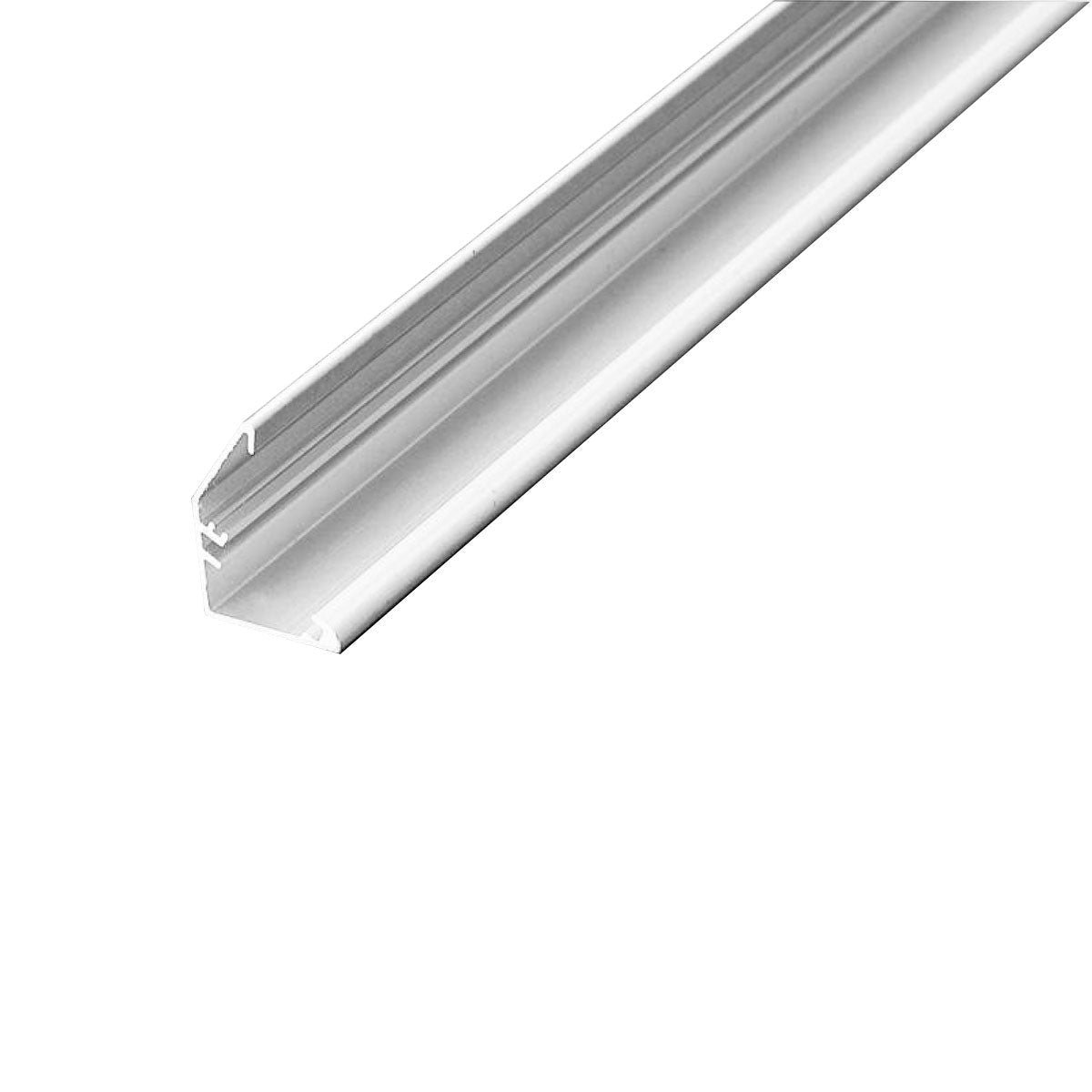With the growing popularity of LED strip lights in residential, commercial, and architectural lighting, LED Aluminum Channels are no longer just accessories—they are an integral part of achieving professional, durable, and visually pleasing lighting.
Without a channel, LED strips often face problems such as:
-
Visible LED hotspots and uneven light distribution
-
Dust accumulation on exposed strips
-
Poor heat dissipation, shortening lifespan
-
Messy installation and unfinished appearance
The right aluminum channel, however, transforms LED strips into a seamless lighting element that blends into the design, improving both aesthetics and performance.
So how do you choose the right aluminum channel? Let’s explore the key factors step by step.
1. Width and Thickness: The Foundation of Compatibility
The internal width and height of a channel determine which strips can fit properly. Standard LED strip widths include 8mm, 10mm, 12mm, and 20mm. Choosing the wrong size can cause difficulties: strips may not fit, or they may rattle and fail to dissipate heat effectively.
For example:
-
The U01 9x23mm U-shape channel has a 12mm internal width, ideal for most single-row strips, commonly used under cabinets or in display lighting.
-
The U03 10x30mm channel provides 20mm of space, allowing dual-row or higher-output strips, suitable for brighter installations.
-
For larger projects, oversized profiles such as the H20050 recessed channel can house high-power strips for expansive lighting needs.
Tip: The wider and more powerful the strip, the more internal space is needed to ensure proper fit, stability, and cooling.
2. Depth: The Key to Smooth, Dot-Free Light
The depth of the channel largely determines whether the lighting looks premium or basic.
-
Shallow channels, such as the U02 9x17mm, are compact and versatile, ideal for furniture or tight spaces. However, LED hotspots may remain visible.
-
Deep channels, like the U06 36x24mm, give light more room to diffuse through the cover, producing a continuous, uniform glow with no visible dots.
For living room coves, hotel lobbies, or exhibition spaces, deeper channels paired with high-density strips (120 LEDs/m or more) and a frosted cover create elegant, dot-free light bands that elevate the space.
3. Diffusers: The “Filter” of Light
The diffuser cover has a major impact on the appearance and ambience of light:
-
Clear covers: Provide maximum brightness, suitable for task lighting in kitchens or work areas.
-
Frosted (milky) covers: Soften the light, reduce glare, and create a comfortable atmosphere—ideal for bedrooms and living rooms.
-
Smoke or black covers: Nearly invisible when lights are off, striking and atmospheric when illuminated. Examples include the U02 all-black model or V02 black corner channel, often used in modern homes and upscale commercial settings.
Think of diffusers as light “filters”: clear for brightness, frosted for softness, black for sophistication.
4. Installation Methods: How Lighting Integrates into Space
The way a channel is installed affects both function and design.
-
Surface-mounted: Models like the U04 10x23mm can be fixed on walls, ceilings, or furniture. Easy to install, suitable for DIY.
-
Recessed-mounted: Channels like the H15050 recessed profile sit flush with the surface, delivering a clean and seamless look, often found in conference rooms, galleries, or hotels.
-
Corner-mounted (V-shape): Profiles like the V01 16x16mm are designed for edges and corners, eliminating shadows in cabinets or ceiling coves.
-
Pendant-mounted: Large channels such as the D60 round pendant profile can be transformed into linear or circular pendant fixtures for open-plan offices or exhibition halls.
Different installation methods define whether lighting plays a supporting role or becomes a visual centerpiece in the space.
5. Application Scenarios and Model Recommendations
Here are some real-world examples to help guide selection:
-
Kitchen countertops: Compact U01 9x23mm channels provide bright, practical task lighting.
-
Living room ceiling coves: Deeper U06 36x24mm, paired with a frosted cover, creates smooth, elegant light bands for ambience.
-
Wardrobes and display cabinets: Corner-mounted V03 18x18mm ensures even illumination without dark corners.
-
Modern homes and commercial spaces: Black series options like the U02 smoke-black model disappear when off and look sleek and stylish when lit.
-
Large offices or exhibition halls: Oversized H20050 recessed channels support high-power strips, providing wide and uniform coverage.
Conclusion
Choosing the right LED aluminum channel is not just about dimensions—it’s about combining strip compatibility, channel depth, diffuser style, and installation method to achieve the desired effect.
In smaller spaces, hidden and minimalist solutions work best; in larger projects, robust profiles with strong visual presence create both function and atmosphere. With careful selection, LED channels can elevate lighting from a utility to a true design element.

